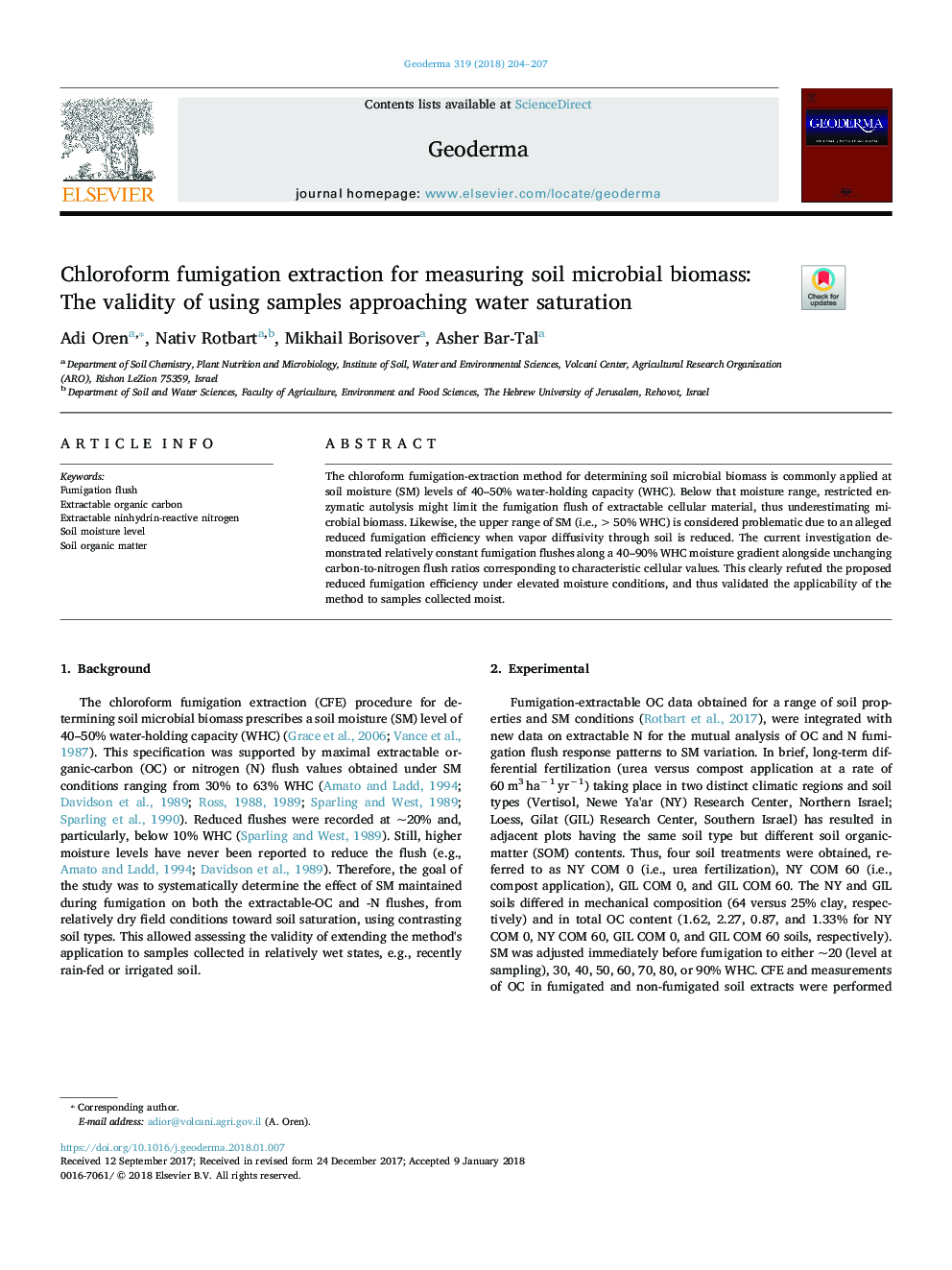| Article ID | Journal | Published Year | Pages | File Type |
|---|---|---|---|---|
| 8894168 | Geoderma | 2018 | 4 Pages |
Abstract
The chloroform fumigation-extraction method for determining soil microbial biomass is commonly applied at soil moisture (SM) levels of 40-50% water-holding capacity (WHC). Below that moisture range, restricted enzymatic autolysis might limit the fumigation flush of extractable cellular material, thus underestimating microbial biomass. Likewise, the upper range of SM (i.e., >50% WHC) is considered problematic due to an alleged reduced fumigation efficiency when vapor diffusivity through soil is reduced. The current investigation demonstrated relatively constant fumigation flushes along a 40-90% WHC moisture gradient alongside unchanging carbon-to-nitrogen flush ratios corresponding to characteristic cellular values. This clearly refuted the proposed reduced fumigation efficiency under elevated moisture conditions, and thus validated the applicability of the method to samples collected moist.
Keywords
Related Topics
Physical Sciences and Engineering
Earth and Planetary Sciences
Earth-Surface Processes
Authors
Adi Oren, Nativ Rotbart, Mikhail Borisover, Asher Bar-Tal,
